Getting your website set up to display Google Ads can be a great way to start earning revenue, as outlined in this helpful guide. However, to take your ad earnings to the next level, you may want professional guide from an expert ad management platform like Bigfourth.
Introduction to Put Google Ads on My Website
Looking for ways to monetize your website and start earning ad revenue? One of the best options is to put google ads on my website. Google AdSense is a program that allows publishers to display text, image, and video ads on their website. The ads are provided by Google and are targeted to your site’s content and audience.
There are a few benefits to using AdSense:
- Easy to set up and get approved. Just sign up for AdSense, add the code to your site, and you can be earning money within days.
- Huge ad inventory. Google has millions of advertisers, so there are plenty of types of ads available.
- Hands-off management. Google finds the advertisers, delivers the ads, and sends you a check each month.
- Name brand trust. Displaying Google ads builds trust with visitors.
To put Google ads on my website, there are a few key steps:
- Sign up for an AdSense account and get approved. This may take a few days or weeks.
- Once approved, copy the AdSense code snippet and paste it on every page of your site before the closing </head> tag.
- Choose ad types like display ads, anchor ads, responsive ads based on your goals.
- Use widgets, ad units, or placeholders to add ads to your website pages.
- Adjust AdSense settings like enabling auto ads, in-page ads, ad load %, excluded pages, etc.
- Track ad performance with the AdSense reports to see earnings per ad unit.
- Increase ad revenue by experimenting with different ad placements.
- Keep your privacy policy updated to comply with Google’s policies.
Benefits of AdSense | Drawbacks of AdSense |
| Easy setup process | Lower revenue than other networks |
| Huge ad inventory | Limited customization & control |
| Hands-off management | Need significant traffic to earn well |
| Brand name trust |
Before adding AdSense or any other advertising to your site, make sure your content and traffic levels warrant it. You’ll need a minimum of 100 visitors per day before you start seeing real ad earnings.
Focus on building high-quality content, growing organic traffic through SEO, and improving user engagement first. Then you can supplement your revenue by put google ads on my website through AdSense.
Over time, monitor your ad performance and experiment with placements, ad types, and other settings to improve your Google AdSense earnings. With the right strategy, you can steadily grow your ad revenue over time.
Sign up for Google AdSense
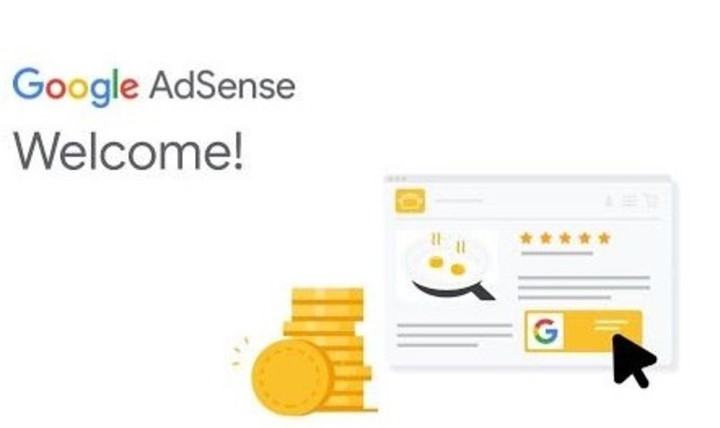
The first step to put Google ads on my website is to sign up for Google AdSense. This is Google’s advertising program that allows you to display text, image, and video ads on your website to earn money.
To get started, go to the AdSense website and click “Start Now.” You’ll need to provide some basic information:
- Your website URL
- Contact email address
- Mailing address
- Phone number
- Bank account info
Google will review your website to ensure it complies with the AdSense program policies. Your content needs to be original, high-quality, and appropriate for all audiences.
Here are some of Google’s main eligibility requirements:
Unique, original content
No copyright violations
No adult, illegal, or dangerous content
Must follow Google’s guidelines
It’s a good idea to review their policies thoroughly before applying. Also make sure your website is fully developed, has enough content pages, and is receiving at least 100 visitors per day.
Once approved, you’ll gain access to your AdSense dashboard where you can generate ad code put google ads on my website and start optimizing your setup.
Here’s an overview of what you can do in your AdSense account:
- Generate ad code snippets
- Select ad types and sizes
- Choose ad placements on pages
- Enable auto ads
- Adjust ad load settings
- Block ads on certain pages
- Review performance reports
- Link your payment info
- Access earnings
It may take a few days to a few weeks to get approved for AdSense. Be patient, keep creating great content, and focus on building your traffic. AdSense will review your application and website statistics before approving your account.
Once you’re approved, take time to carefully set up your ad placements, types of ads, page exclusions, and other settings. Start with a limited number of ads and then scale up gradually as you observe performance. With some optimization, AdSense can become a nice revenue stream alongside other money-making strategies on your website.
Add AdSense code to your website
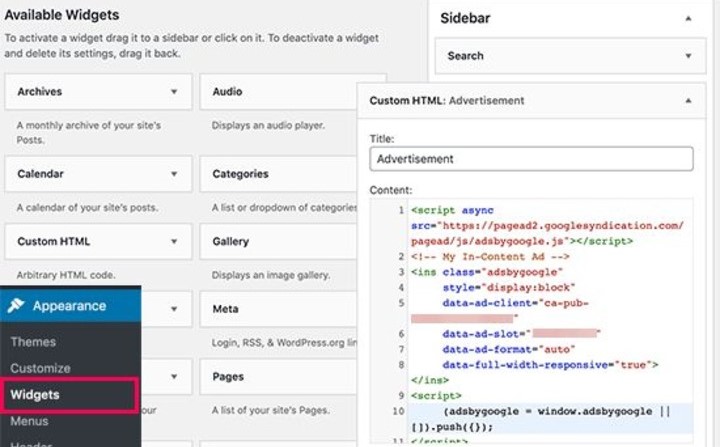
Now that you’ve signed up for AdSense and gotten approved, it’s time to add the ad code to your website. This allows Google to insert targeted ads on your pages.
To find the code, go to your AdSense dashboard and click “Ads” in the left menu. Then click “Overview” and you’ll see a box that says “Get code.”
Click that link, and Google will generate your unique AdSense code snippet and then put google ads on my website. It will look something like this:
<script async src=”https://pagead2.googlesyndication.com/pagead/js/adsbygoogle.js“></script>
<ins class=”adsbygoogle“
style=”display:block“
data-ad-client=”ca-pub-0123456789012345“
data-ad-slot=”1234567890“
data-ad-format=”auto“
data-full-width-responsive=”true“></ins>
<script>
(adsbygoogle = window.adsbygoogle || []).push({});
</script>
This code snippet needs to go on every page of your site before the closing </head> tag.
There are a few ways to insert it:
- Manually paste it in your theme’s header.php file
- Use a plugin like Header Footer Scripts
- Insert it Google Tag Manager
For WordPress sites, the easiest option is to use the Header Footer Scripts plugin. Just install, activate, and then paste the code into the “Header” field.
Once the code is added, Google will start displaying targeted ads on your pages within about 48 hours. No need to add each ad manually.
Where you place the code depends on your theme, but putting it right before </head> is usually best. This allows the ads to load quickly in the header.
With the code in place, you’re ready to start optimizing your AdSense setup and creating placements for different ad types and sizes. Take it slow at first and monitor how placements and ad units impact your ad performance.
Keep a close eye on your AdSense reports to see which placements, pages, ad types, sizes, and formats perform best. Then tailor your approach to maximize revenue over time.
As you expand your AdSense implementation, be careful not to overload pages with too many ads. A moderate amount spaced evenly is ideal for both revenue and user experience.
With refinedoptimization and enough traffic, AdSense can become a nice passive income stream alongside other monetization methods on your website.
Choose types of Google Ads
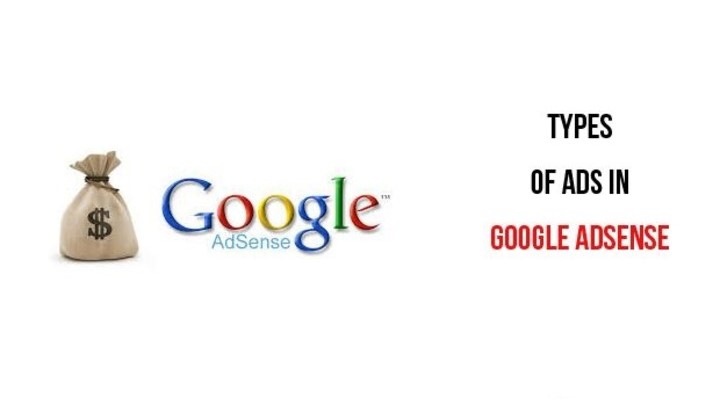
One of the key steps in put google ads on my website and optimizing your Google AdSense setup is choosing the right types of ads to display. AdSense offers a variety of ad formats, so you can tailor them to your goals and website layout.
Here are some of the most common AdSense ad types:
Display ads – Standard rectangular image or text ads. Offered in multiple sizes.
In-article ads – Display ads injected between paragraphs in blog posts.
Anchor ads – Display ads that stick to the bottom of the page.
Link units – List of contextual text links.
Responsive ads – Display ads that dynamically resize to fit space.
In-feed ads – Native ad units blended into content feeds.
Matched content – Inline recommendations for your content.
To configure your ad types:
- Go to your AdSense account and click on Ads > Ad units.
- Click the large blue “+ New ad unit” button.
- Choose the ad type you want to create.
- Select the size and dimensions.
- Configure any other settings.
- Click “Create ad code” and copy the generated code.
Now you can paste the ad code into your site using widgets, shortcodes, or code snippets. Test out different placements to find what works best.
Here are some best practices as you select ad types:
- Use a mix of display, in-article, and anchor ads for versatility.
- Make some units responsive so they fit any screen size.
- Try in-feed native ads in blog post content for a natural look.
- Limit in-article ads to 1 or 2 per post to avoid clutter.
- Place anchor ads at the end of long articles and tutorials.
- Test mathed content and link unit placements.
Monitor the performance of each ad type in your AdSense reports. Look at page RPM, CTR, impressions, and other metrics. Then optimize your setup accordingly.
Taking the time to dial in your AdSense ad types, sizes, and placements will pay off with greater earnings over the long run. Don’t let your valuable ad space go to waste!
Put Google Ads on My Website

Now that you’ve chosen your ad types in AdSense, it’s time to put google ads on my website. Ad placement has a big impact on performance, so you’ll want to test different options.
Here are some common ways to put google ads on my website:
Widgets
Many themes like WordPress allow you to add widgets to sidebars, footers, and other widgetized areas. You can create an HTML widget and paste the ad code there.
This gives you flexibility to drop ads into different spots and see how they perform.
Ad Inserter Plugins
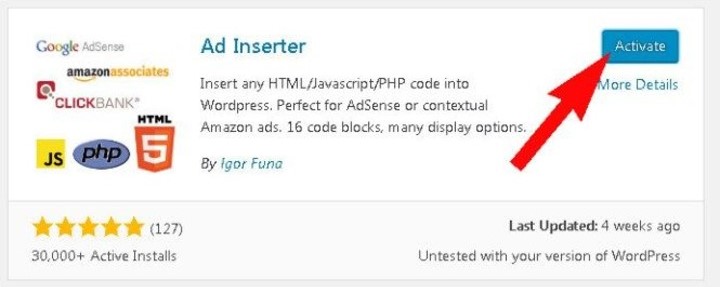
Plugins like Ad Inserter for WordPress let you insert ads directly into post and page content. This is great for testing in-article ad placements.
You get fine-grained controls for positioning ads relative to text, images, headings and more.
Header Code
As discussed earlier, you can paste the AdSense header code directly into your theme’s header.php file.
This allows Google to insert ads site-wide automatically. Just be careful not to overdo it.
Theme Integration
Many WordPress themes come “AdSense-ready” with built-in options to display ads in intelligent spots.
Use these settings to adjust ad placements without coding knowledge.
Manual Placement
Hard-coding ad units directly in your theme templates gives full control but requires some development skills.
Test different manual placements like slide-in sidebars, page footers, pop-ups, etc.
Ad Placeholder Tools
Tools like Ezoic Leap help you visually place ad placeholders anywhere on a page.
Their system inserts relevant ads automatically.
Some best practices for ad placement:
- Don’t overload pages with too many ads. Ads need room to stand out.
- Test sidebar, header, footer, in-article placements. Monitor performance.
- Make sure ads aren’t buried where visitors won’t see them.
- Avoid placements that block important site features or navigation.
- Use page-level placement customization, don’t take a one-size-fits-all approach.
Take the time to experiment with ad placements across your site. The optimal positions will depend on your theme, layout, content, and visitors.
Keep tweaking your Google AdSense setup over time and you’ll discover the right formula for maximizing earnigs.
Adjust AdSense settings
Beyond placements and ad types in put google ads on my website, optimizing your overall AdSense settings can boost earnings. Let’s look at some key options to configure.
Auto ads
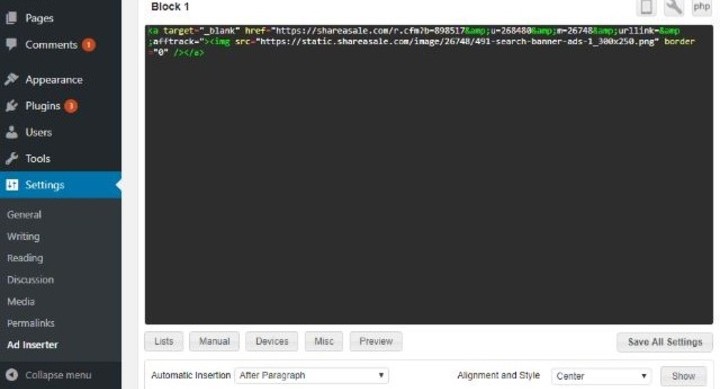
This feature places ads automatically across your site without having to manage placements individually. Just toggle it on globally or for specific ad units.
Auto ads work fairly well in most cases. But you lose some fine-grained control compared to manual placements.
Ad load
These settings control the number of ads displayed on pages. You can set a site-wide default ad load or customize it for individual pages or posts.
Limit ad load to 3-5 ads per page maximum. Too many ads degrades user experience.
Page-level ads
Exclude ads from certain pages like contact, about, etc. Or set a custom ad load for key pages that deserve more or fewer ads.
Page-level customization is key – don’t take a one-size-fits-all approach.
Ad blocking
You can block certain low-quality, irrelevant, or inappropriate ads from displaying. Make sure to only block ads you’re certain about.
Reports
Review your performance reports frequently. Look at RPM, impressions, CTR, top placements, etc. for insights.
Payments
Double check your payment info and payout preferences. You want your earnings flowing smoothly each month.
Here are some general best practices:
- Start conservatively and scale up ad density slowly. Observe impact.
- Don’t overwhelm pages with too many ads. Balance revenue with UX.
- Customize ad load on a page-by-page basis for relevance.
- Review reports frequently and optimize accordingly.
- Keep your privacy policy and ads clearly compliant.
- Be selective about blocking ads. Avoid blocking at scale.
- Make sure your payout details are always up to date.
Take the time to carefully configure your AdSense settings as described above. Small tweaks can add up to big earnings over time.
Don’t let your ads underperform due to lack of ongoing optimization. AdSense should be a “set it and forget it” passive income stream when properly managed.
Track ad performance
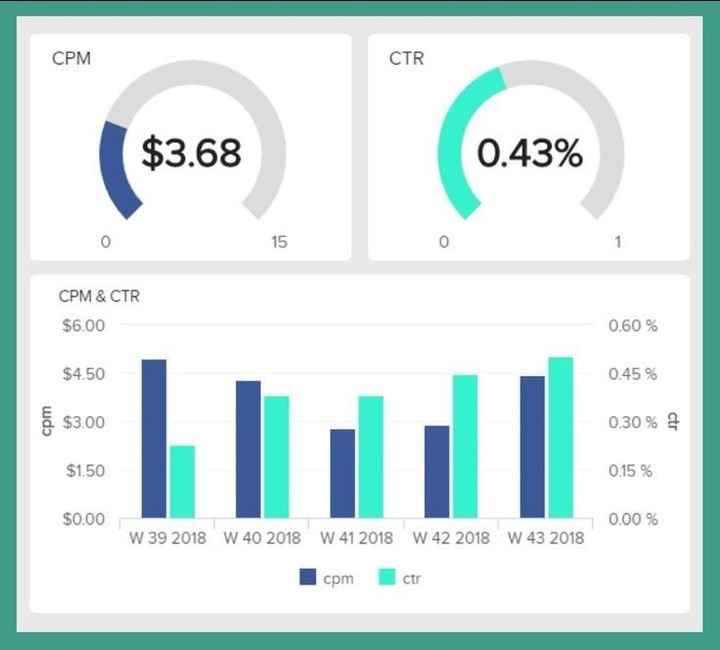
To maximize your AdSense earnings, you need to closely monitor ad performance and make data-driven optimizations. Let’s look at how to track key analytics.
Use the AdSense reports
Your main tool is the AdSense reports page. It provides a wealth of data on impressions, clicks, CTR, earnings, and more.
Dig into the different report categories like Performance, Ad units, Top pages, Device types, and so on.
Here are some particularly valuable reports to study:
Site performance – Gives you an overview of total ad clicks, impressions, CTR, earnings.
Ad units – Shows metrics for each ad placement you’ve created.
Top pages – Details which pages generate the most ad revenue.
Ad types – Breaks down performance by ad type, size, and format.
Devices – Compare metrics across desktop, mobile, and tablet.
Hourly trends – See how revenue varies by day and hour.
Set up custom dashboards
Use the customization options in AdSense to build specialized dashboards. Add the reports most important to your optimization goals.
Focus each dashboard on a particular aspect, like ad layouts, placements, pages, or formats.
Integrate with analytics
For even more data, connect your AdSense account to your Google Analytics property.
This unlocks additional dimensions like geolocation, engagement metrics, attribution and more.
You can bring this data directly into your AdSense dashboards for a single view.
Optimize systematically
Collect at least 2-3 weeks of performance data before making optimization decisions. Have a methodology for testing changes.
For instance, try a new ad type or placement and evaluate weekly data to measure impact.
Rely on hard metrics instead of hunches or gut feelings. Let the data guide your AdSense optimizations.
Closely monitoring performance is crucial for maximizing ad revenue in put google ads on my website. Take advantage of all the data Google makes available through AdSense and Analytics.
Increase ad revenue
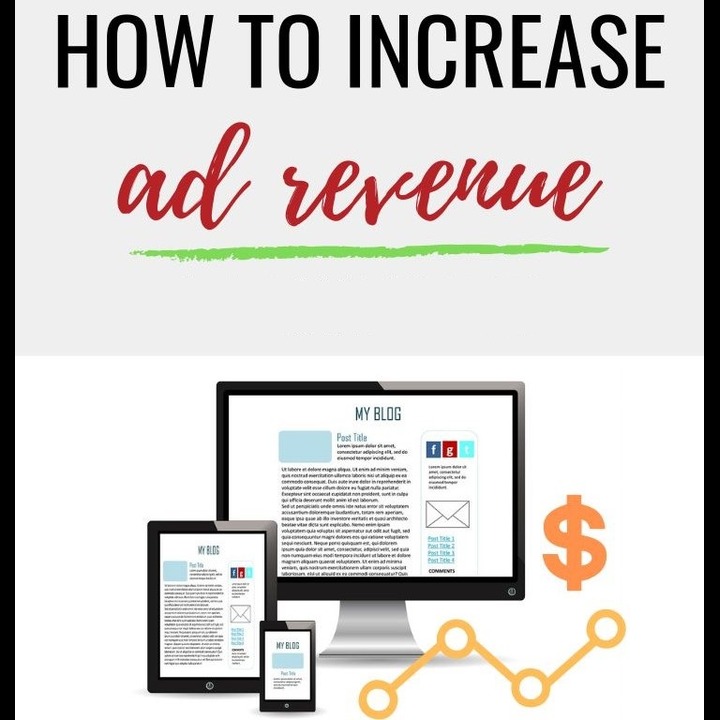
Once you have your initial AdSense setup running smoothly, look for ways to incrementally increase your ad earnings over time. Here are some tactics.
Add more ad units
Very carefully add new ad units to existing pages, or expand ads into more pages on your site. Place them in spots visitors are likely to look.
Too many ads degrade user experience, so take it slow. Also pay attention to layout – ads need breathing room to stand out.
Optimize placements
Continuously test new placements based on your analytics. Try different pages, positions on pages, ad sizes, formats, colors, etc.
Not all placements work the same, so keep experimenting. Don’t let valuable ad real estate go untapped.
Review top-earning pages
Check your analytics to see which pages earn the most from ads. Can you add 1-2 more well-positioned ads to those star players?
Even minor changes here can lead to big revenue lifts.
Analyze low-performing pages
Pages with poor ad metrics may need content improvements to boost engagement. Or test moving the ads themselves to better spots.
Don’t waste ad space on pages that aren’t earning their keep.
Make ads more prominent
Try design tweaks like adding borders, background colors, animation, contrast, size increases, etc. to make ads stand out more.
You want them to catch the viewer’s eye but not overwhelm the experience.
Test new ad types
AdSense offers a variety of ad types – make sure to test them all and find the optimal mix.
Analyze the metrics for each ad type and focus on the most profitable ones.
Check your page speeds
Optimizing page load speeds can increase user engagement in put google ads on my website. More engaged visitors view and click on more ads.
Faster pages also allow ads to load quicker. Slow ads lead to lower CTR.
Follow the data
Let your analytics data guide optimization decisions rather than hunches. Ad changes driven by hard metrics will lift revenue more reliably.
Testing systematically is key – avoid changing too many variables at once.
Keep privacy policy updated

An important but often overlooked aspect of running Google Ads is keeping your privacy policy up to date. This ensures your site remains compliant with AdSense program policies.
Here are some tips for maintaining a proper privacy policy:
Disclose ad relationships – Your policy should reveal you display ads via Google AdSense and other networks.
Explain user data collection – Detail what visitor data gets collected for ads (IP addresses, location, browser info, etc).
Describe cookie use – AdSense and most ad platforms use cookies to target ads. Document what they do.
Allow opt-outs – Give users a way to opt out of data collection and targeting.
List other data receivers – If you send user data to analytics, social, etc. tools note that as well.
Keep it updated – Revisit your privacy policy every 6 months minimum to make any needed changes.
Your privacy policy must be:
Obvious – Link to it prominently from your site footer or navigation. Don’t bury it.
Readable – Write clearly in plain language. Avoid dense legal jargon.
Detailed – Document all aspects of data practices – don’t gloss over anything.
Truthful – Don’t claim anything you don’t actually do. Be honest and transparent.
Some other privacy policy tips:
- Post an abridged version summarizing key points.
- Translate into other languages for global visitors.
- Make critical info more visually stand out.
- Allow visitor questions and feedback.
- Check that each page has a working policy link.
Keeping your privacy policy up-to-date takes ongoing diligence. Schedule reminders every 6 months to review it. When adding new codes or services to your site, immediately update the policy.
Don’t give Google any potential policy violation excuses to deactivate your AdSense account. An accurate privacy policy helps build user trust while protecting your revenue stream.
Consider direct ad deals

Once your AdSense earnings are running smoothly in put google ads on my website, look at supplementing revenue through direct ad deals on your site.
How direct ad deals work?
With direct deals, you sell ad placements directly to advertisers instead of going through an ad network like Google.
You identify relevant advertisers, contact them to sell ad space, negotiate pricing, then deliver and report on the campaigns.
Potential benefits
Higher CPMs – By dealing direct, you can command higher ad rates. No middleman fees.
Premium brands – Big name brands often prefer direct deals for quality control.
Custom ad formats – Craft ad spaces tailored to each campaign.
Revenue predictability – Pricing is fixed upfront for entire campaign length.
Fewer ads needed – Higher rates mean you need fewer ads to make the same money.
Find interested advertisers
- Look at who’s advertising on sites similar to yours. Can you pull any of that spend?
- Attend marketing conferences and network to make agency connections.
- Consider hiring an ad sales rep to find sponsors on commission.
- Ask existing partners if they buy ads or know others who might.
Pitch advertisers
Create professional looking media kits that include:
- Site analytics like unique visitors, pageviews, demographics, etc.
- Audience personas and interests.
- Ad placement locations, types and pricing.
- Opportunities like sponsorships, brand content, email ads, etc.
Fulfill ad campaigns
Once a deal closes, you must deliver what was promised. Track metrics, optimize performance, provide reporting on results.
House ads directly
By dealing direct, you can host the ad creative yourself in put google ads on my website rather than going through a third-party ad server.
Or you can still use your Google Ad Manager account.
Adding direct ad deals takes more work but provides significant upside. Treat advertisers like true partners. Over-deliver on campaigns and your revenue will steadily grow.
Conclusion
Put google ads on my website via AdSense is a smart way to start earning revenue from your content and traffic. By following the steps outlined in this guide, you can go from zero to a functioning AdSense setup in fairly short order.
Here are the key steps covered:
- Sign up for an AdSense account and get your site approved.
- Add the AdSense code to your site’s HTML to activate ads.
- Select ad types and placements to show ads in optimal spots.
- Adjust AdSense settings like auto ads, ad load, page exclusions, etc.
- Closely track ad performance data and metrics in your reports.
- Optimize over time by tweaking placements, ad types, design to boost earnings.
- Keep your privacy policy current to stay in compliance with Google.
- Consider direct ad deals with brands to supplement AdSense revenue.
- Focus on great content and SEO to keep growing your traffic.
With the strategies discussed here, your AdSense earnings can become a nice passive revenue stream for your website alongside other money-making approaches.
Some key tips to remember:
- Take it slow and test conservatively at first. Monitor impact of changes.
- Balance revenue and user experience. Don’t overload pages with ads.
- Customize ad layouts, types, sizes for each page rather than site-wide.
- Let hard analytics data guide optimization decisions rather than hunches.
- Stay vigilant about compliance to avoid issues with Google.
Be patient, keep iterating, and over time your AdSense optimization skills will improve dramatically. Ad revenue can provide nice diversification alongside other website monetization models.
Now get out there, add some Google Ads, and start earning!
Website Services and Our Mission
With deep expertise in both Google AdSense and the Google Ad Exchange, Bigfourth can help websites generate significantly more revenue by put google ads on my website. By leveraging sophisticated algorithms and automation, Bigfourth optimizes ad placements and bidding strategies to deliver up to 5X higher CPMs compared to typical AdSense earnings.
As you follow the steps in this guide like signing up for AdSense, adding code, and placing ads – consider connecting with the experts at Bigfourth LTD. Our team can fully handle the setup, optimization, and management of your Google ad inventory.
This frees you to focus on creating great content, growing your audience, and expanding your website while Bigfourth’s technology and team work silently behind the scenes to maximize your ad revenue.
With deep roots in ad tech, dedicated account management, and completely customizable solutions – Bigfourth is the perfect Blog to take your Google Ads and overall ad monetization to the next level. Be sure to check us out to learn more!
Contact Bigfourth LTD
Website: https://bigfourth.com/
Email: [email protected]
Fanpage: https://www.facebook.com/bigfourth/
Linkedin: https://www.linkedin.com/in/bigfourth/
